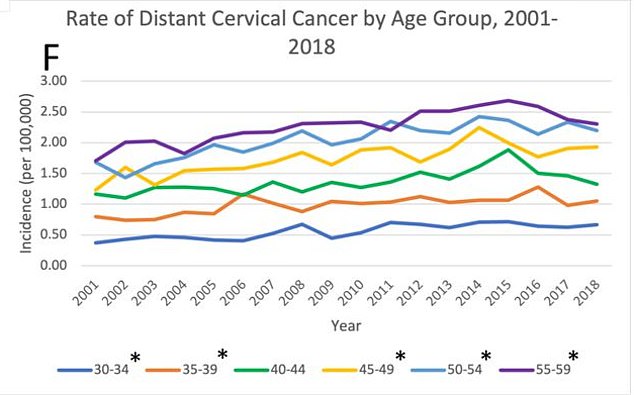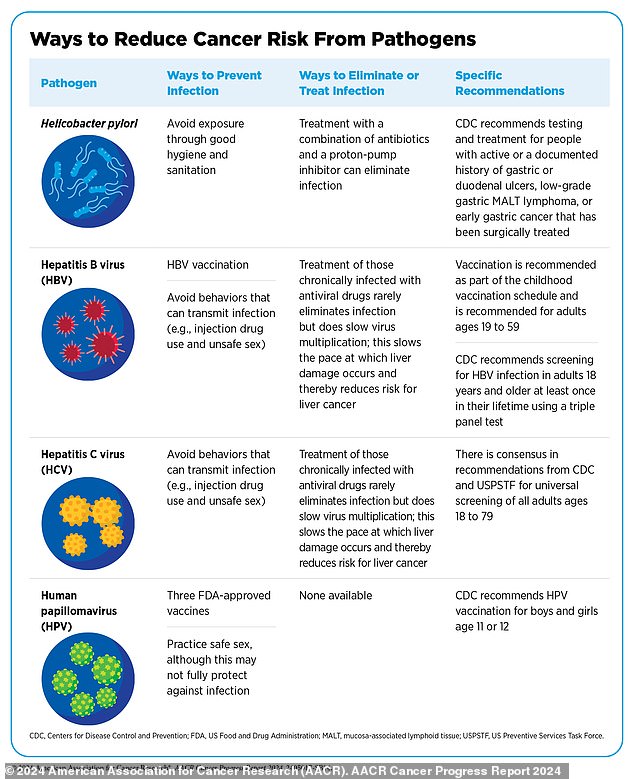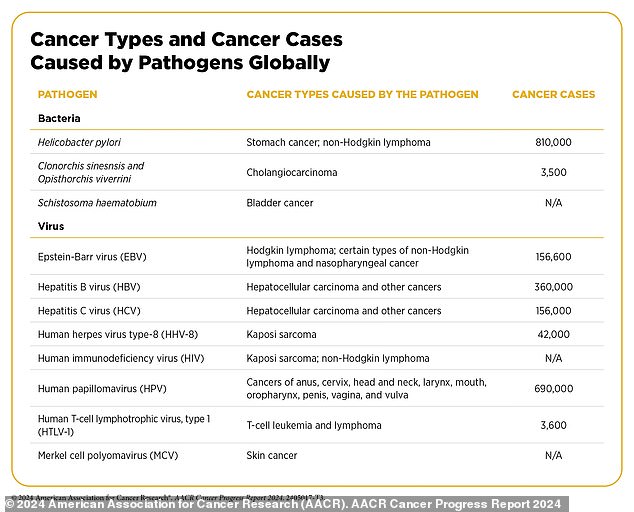Cancer isn’t traditionally thought of as a disease people can ‘catch.’
But a new report warns that tumors caused by common STDs are on the rise across America.
While rates of major cancers of the lung, breast and kidney have stabilized in recent years, certain types linked to human papillomavirus (HPV) are trending in the wrong direction.
A new report from the American Association for Cancer Research found cervical cancer in people between 30 – 34 has increased 17.5 percent from 2012-2019.
Likewise, rates of mouth and throat cancers caused by HPV have been increasing in all ages, the AACR report said.



The report pins the uptick on the number of people dodging the vaccine. Other theories include more people having casual, unprotected sex.
Girls and boys are recommended to start the course of three vaccines beginning around age 11.
But the vaccine hasn’t been mandated nationally, and the US has fallen behind other countries in it’s uptake.
As of 2022, only 38 percent of American adolescents received at least one dose of the HPV vaccine.
In the UK and Australia, 76 percent of and 84 percent of children under 17 had gotten one or more doses of the vaccine.
‘Despite clear evidence demonstrating that the vaccine reduces cervical cancer incidence, vaccine uptake in the U.S. has been poor,’ according to the report.
‘These data emphasize the critical importance of public health measures to boost cervical cancer prevention and early detection in the United States.’
‘Deploying resources to raise public awareness of cancer prevention … can accelerate the pace of progress in reducing the global cancer burden’.
The report estimated that in 2024, some 2million cancers will be diagnosed in the US.
Of those, the American Cancer Society said HPV related cancers – of the mouth, head, throat, cervix and genitals – cause 1.2 percent of all cancers in men and 2.5 percent of all cancers in women.
This represents about 11,500 new cases of cervical cancer and about 4,000 deaths from the disease.
In women age 30 to 34, the AACR report said the overall incidence of cervical cancer has increased 2.5 percent per year between 2012 and 2019 – a total of 17.5 percent in seven years.
Oral cancers linked to HPV – of both the throat and mouth – in all ages have also been increasing, the AACR said.
The American Cancer Society estimated that since the mid 2000’s, all oral and throat cancer cases have increased by 1 percent per year, mainly because of HPV.
Some doctors think oral sex — of all kinds — could be the culprit.
There is some suggestion that this uptick in HPV-related cancers is linked to riskier sexual behavior from individuals seeking connection after the pandemic.

Public health officials and pop culture icons have been raising awareness about the trend in recent years.
Michael Douglas shared in 2013 that he believed he developed throat cancer from HPV he caught during oral sex.
Farah Fawcett, the Charlie’s Angels star, succumbed to an HPV related cancer in 2006. Before her death, she founded in a program at UC Davis to raise awareness for the disease.
HPV is a virus that can be transmitted by contact with the blood, bodily fluid, or skin of an infected person – primarily through sex.
It’s highly contagious and according to the National Foundation for Infectious Diseases, is thought to affect more than 42 million Americans.

There are 200 different kinds of HPV infections – 12 of them have been linked to cancer.
The virus can cause cancer by weakening the immune system, causing chronic inflammation and changing the way cells in the body behave, mutating them into cancerous masses.
Nearly 99.7 percent of all cervical cancers are caused by HPV.
About 90 percent of anal cancers, 70 percent of mouth and throat cancers, and many penile and vulvar cancers are caused by this virus, according to the AACR report.
A vaccination against HPV was approved by the FDA in 2006 – and is available for both boys and girls beginning at age 11.
Vaccination is thought to prevent nearly nine in 10 HPV-associated cancers, according to a 2020 study from Sweden. Likewise, a 2024 study in Scotland found that early vaccination programs that began decades earlier led to zero new cases of cervical cancer this year.
